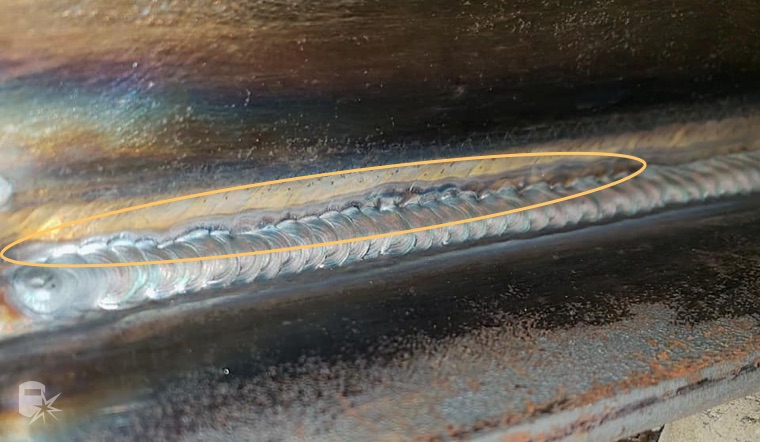Grasping the Art of Welding: How to Prevent Undercut Welding Issues for Flawless Manufacture Results
By understanding the root creates of undercut welding and carrying out efficient strategies to avoid it, welders can boost their craft to brand-new levels of excellence. In the quest of flawless construction results, mastering the art of welding to prevent undercut problems is not just a skill but a need for those making every effort for perfection in their work.
Recognizing Undercut Welding

To stop undercut welding, welders need to make certain correct welding criteria, such as adjusting the current, voltage, traveling rate, and maintaining the correct electrode angle. By recognizing the reasons of undercut welding and applying preventative steps, welders can achieve high-grade, structurally audio welds.
Reasons For Undercut in Welding
Recognizing the variables that contribute to undercut in welding is important for welders to create premium, structurally sound welds. When the weld steel does not appropriately load the groove developed between the base steel and the formerly deposited weld metal, damaging occurs. Numerous aspects can bring about undercut in welding. One common reason is excessive warmth input. Welding at heats for extensive durations can result in the base metal thawing even more than desired, resulting in damage. Poor welding wrong or current welding rate can likewise add to undercut. Not enough current may not offer adequate heat to melt the base and filler metals appropriately, while extreme rate can prevent appropriate blend, creating undercut. Additionally, incorrect electrode angles or wrong lantern adjustment strategies can create locations of low weld steel deposition, promoting undercut. Understanding these causes and applying appropriate welding methods can aid stop undercutting concerns, guaranteeing strong and long lasting welds.
Strategies to avoid Undercutting

To alleviate the danger of damaging in welding, welders can employ critical welding strategies intended at improving the top quality and integrity of the weld joints. One reliable approach is to change the welding parameters, such as voltage, present, and take a trip speed, to make certain proper warm input and deposition. Keeping an ideal electrode angle and making sure regular travel rate can additionally aid avoid undercut. In addition, making use of the correct welding strategy for the details joint arrangement, such as weave or stringer grains, can add to reducing damaging. Preventing weld undercut.
Furthermore, proper joint preparation, consisting of making certain tidy base materials devoid of impurities and making use of the appropriate welding consumables, is essential in stopping undercut problems. Using back-step visit this page welding strategies and managing the weld grain account can additionally help disperse heat uniformly and decrease the danger of undercut. Regular inspection of look these up the weld joint throughout and after welding, along with executing quality control procedures, can help in resolving and finding damaging problems promptly. By carrying out these methods vigilantly, welders can accomplish flawless construction results with marginal undercut issues.
Value of Proper Welding Parameters
Choosing and maintaining proper welding specifications is essential for attaining effective welds with minimal defects. Welding criteria refer to variables such as voltage, existing, travel speed, electrode angle, and protecting gas circulation rate that directly impact the welding process. These specifications have to be carefully adjusted based on the type of product being bonded, its density, and the welding strategy used.
Correct welding criteria ensure the best amount of warm is put on melt the base steels and filler product evenly. If the criteria are established as well high, it can cause too much warmth input, creating spatter, burn-through, or distortion. On the various other hand, if the criteria are as well low, incomplete combination, lack of penetration, or damaging you can find out more might happen.
Quality Control in Welding Operations

Conclusion
To conclude, understanding the art of welding needs an extensive understanding of undercut welding, its causes, and techniques to prevent it. By ensuring appropriate welding parameters and implementing top quality assurance methods, flawless manufacture results can be attained. It is necessary for welders to regularly pursue quality in their welding procedures to avoid undercut problems and produce top notch welds.
Undercut welding, a common issue in welding procedures, happens when the weld steel doesn't effectively fill the groove and leaves a groove or clinical depression along the welded joint.To prevent undercut welding, welders need to guarantee correct welding parameters, such as readjusting the current, voltage, travel speed, and preserving the right electrode angle. Insufficient welding current or inaccurate welding rate can additionally add to damage.To mitigate the danger of damaging in welding, welders can employ strategic welding methods intended at boosting the high quality and integrity of the weld joints.In final thought, understanding the art of welding requires a detailed understanding of undercut welding, its causes, and methods to avoid it.